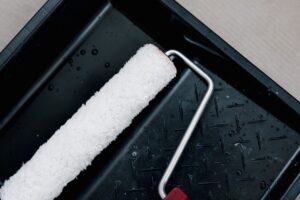
The Impact Of Weather On Your Home Painting Preparation Plans
Picture this: you’ve finally decided to give your home a fresh coat of paint, ready to transform its appearance and protect its surfaces. But before you embark on this exciting project, buckle up and consider the impact of weather on your painting plans. Weather conditions play a crucial role in the success of any exterior painting job. Proper preparation and understanding of weather factors are essential for achieving long-lasting results. Issues like rain, humidity, extreme temperatures, or even strong winds can cause problems with adhesion, affect the quality of the paint job, and lead to premature wear and tear. We’ll provide tips on how to work around different weather conditions and recommend products and services that can help you achieve a high-quality finish. So get ready to tackle your next painting project with confidence! Optimal Weather For Exterior House Painting Ideal Temperature Range For Exterior Painting The temperature plays a crucial role in the success of your exterior house painting project. It’s important to choose the right time to paint, ensuring optimal conditions for the paint to adhere properly and dry effectively. The ideal temperature range for exterior painting is typically between 50°F and 90°F. Painting outside this temperature range can have negative consequences on the final outcome. If it’s too cold, below 50°F, the paint may not dry properly, leading to issues like poor adhesion and longer drying time. On the other hand, extremely hot temperatures above 90°F can cause rapid drying, making it challenging to achieve a smooth finish. Humidity And Its Effects On Exterior Paint In addition to temperature, humidity levels also play a significant role in exterior house painting. High humidity can prolong the drying time of paint, which can result in potential issues with proper curing. When there is excessive moisture in the air, it can lead to bubbling or peeling of the paint film. To ensure a successful painting project, it’s essential to choose low-humidity days for exterior painting projects. This will help facilitate proper drying and curing of the paint without any unwanted complications. Monitoring weather forecasts for humidity levels can be helpful in planning your painting schedule. The Impact Of Extreme Temperatures On Exterior Paint Extreme temperatures can have adverse effects on exterior paint if not taken into consideration during your painting preparation plans. Both freezing temperatures and scorching heat can pose challenges that affect the durability and appearance of your painted surfaces. Freezing temperatures hinder proper curing and bonding of the paint to the surface. When water freezes within or under freshly applied paint layers, it expands and causes cracking or flaking over time. It’s crucial to avoid exterior painting when temperatures are expected to drop below freezing point. On the other hand, extremely hot temperatures can cause the paint to dry too quickly, making it difficult to achieve a smooth and even finish. Rapid drying can also lead to issues with paint adhesion and color retention. It’s advisable to schedule your painting project during milder temperature conditions to ensure the best possible outcome. Fluctuating temperature extremes can also have a negative impact on exterior paint. When surfaces expand and contract due to temperature changes, it puts stress on the paint film, leading to cracks or flaking over time. This is especially true for regions with significant variations in seasonal temperatures. To summarize, when planning your home painting project, it’s crucial to consider the optimal weather conditions for exterior painting. The ideal temperature range falls between 50°F and 90°F, while low humidity levels are preferable for proper drying and curing of the paint. Avoid extreme temperatures that can hinder adhesion, drying time, and overall durability of the painted surfaces. Remember, taking these factors into account will help you achieve a long-lasting and visually appealing finish for your home’s exterior. Preparing Your Home For Painting To ensure a successful painting project, it’s crucial to properly prepare your home before diving into the colorful world of house painting. This section will guide you through the essential steps of cleaning and surface preparation, as well as repairing damaged materials and priming. Cleaning And Surface Preparation Steps Before picking up that paintbrush, take some time to thoroughly clean the surfaces you plan to paint. Dirt, dust, and mildew can hinder proper paint adhesion, leading to unsatisfactory results in the long run. Here are some key steps to follow: Remove any loose dirt or debris from the surfaces using a stiff brush or broom. For larger areas or heavily soiled surfaces, power washing can be an efficient method to get rid of grime effectively. Pay special attention to areas prone to mildew growth, such as exterior walls or damp spaces. Use a bleach solution or mildew cleaner to eliminate any existing growth. Allow sufficient drying time after cleaning before proceeding with the next steps. Properly preparing the surfaces is vital for optimal paint adherence and longevity. By investing time in this stage, you’ll set yourself up for a smooth painting process and beautiful end results. Repairing Damaged Materials And Priming Before applying primer or paint, it’s important to address any damaged areas on your home’s exterior. Cracks, holes, or other imperfections should be repaired beforehand for a flawless finish. Here’s what you need to do: Inspect the surfaces carefully for any signs of damage. Look out for cracks in stucco or wood siding, holes in drywall or plaster, and any other issues that may affect the appearance of your painted surface. Use appropriate repair materials based on the type of damage encountered. For small cracks or holes in walls, spackling compounds can be used; larger repairs may require patching materials or professional assistance. Once the repairs are complete, it’s time to prime the surfaces. Priming helps seal porous surfaces, enhances adhesion, and provides a uniform base coat for better coverage of the final paint color. Choose a primer that suits your surface type. There are different primers available for various materials like wood, metal, or masonry. Consult with your local paint store or professional painter









